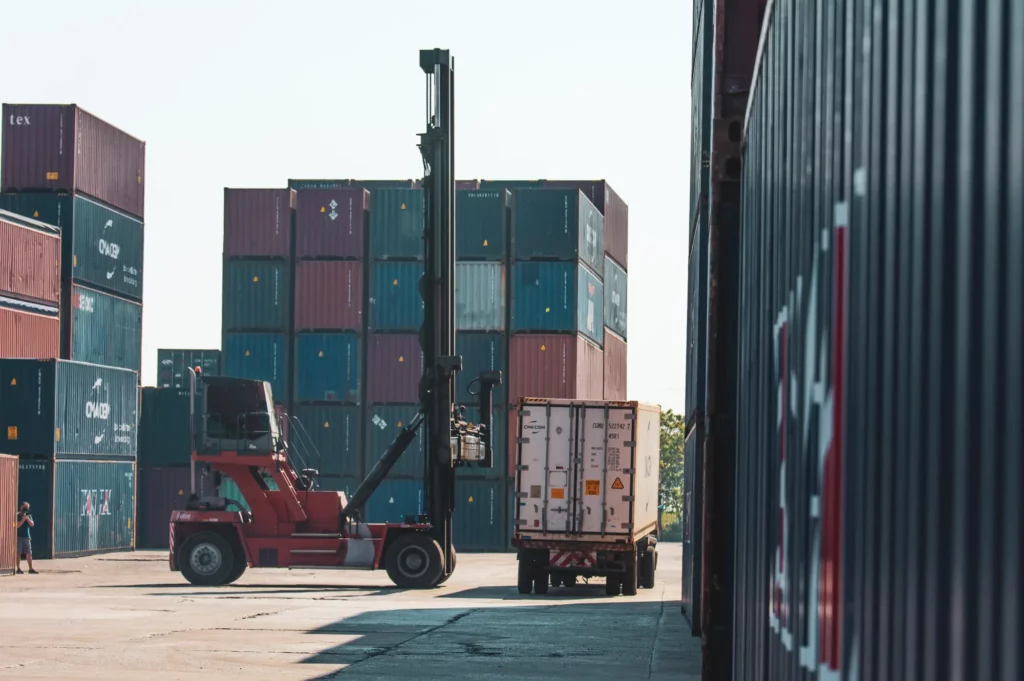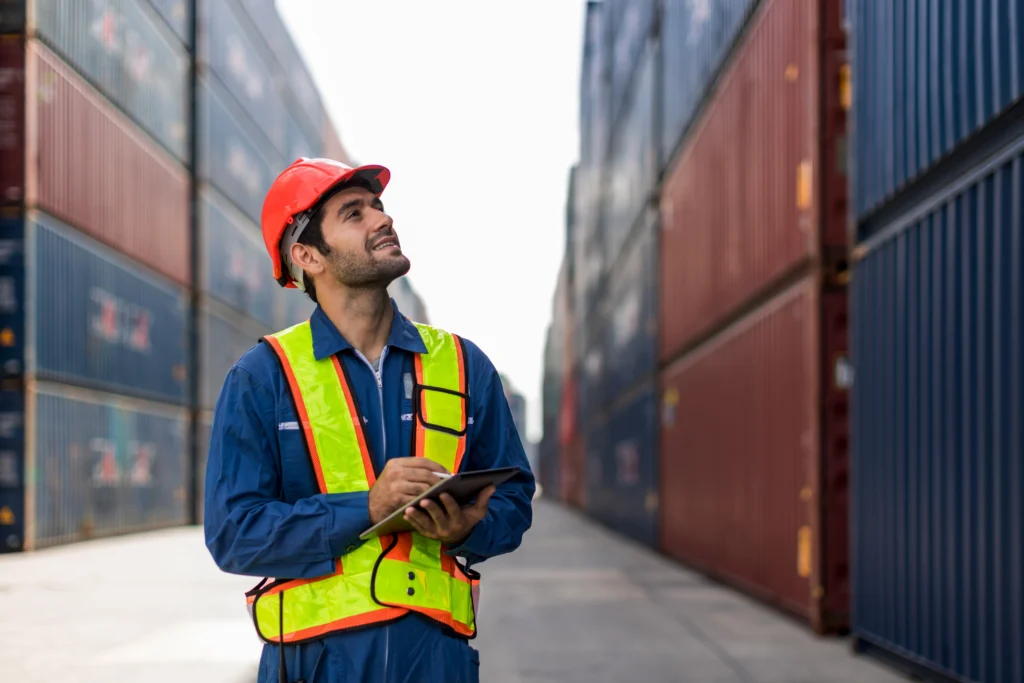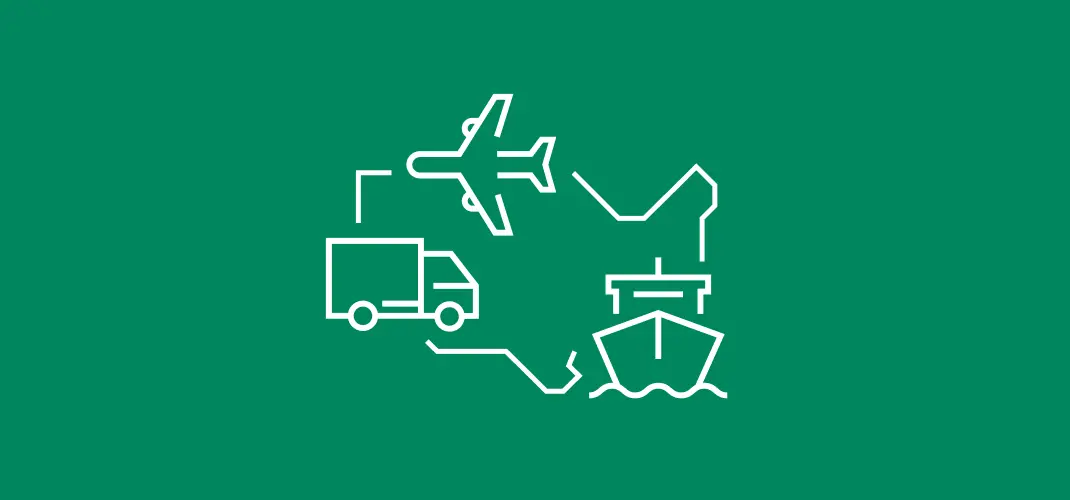In a perfect world, your shipment would be transited directly from the ship to the customer or dealer by truck. However, in the real world, it is subject to one or more short moves before getting on the truck, generally combined under the term “drayage.” The latter refers to the specific segment of the transport process that involves moving shipping containers short distances, typically from port terminals to warehouses or other destinations within the same vicinity. While seemingly straightforward, this vital step is accompanied by complexities and challenges that can significantly impact the efficiency and reliability of supply chains.
Among the challenges, the most common include ensuring the visibility of shipments throughout their journey, coping with the persistent shortage of qualified drivers, managing customs clearance procedures, and mitigating the effects of port congestion. These factors collectively contribute to the complexity of drayage services, requiring advanced planning, robust coordination, and strategic foresight to overcome.
Definition of Drayage Services

As you already know, drayage services typically involve transporting goods over a short distance, such as from a port terminal to a nearby warehouse, distribution center, or rail ramp. They bridge the gap between longer transportation legs, ensuring that goods seamlessly transition from sea or air freight to land transportation networks.
What sets drayage services apart from other types of transportation services is their highly localized nature and specific focus on short distances. Unlike long-haul trucking or intermodal freight services that cover vast distances across states or countries, drayage is confined to a limited geographic area, often within the perimeters of a port or industrial zone. This service is integral to the logistics chain, ensuring the efficient transfer of goods from incoming ships to the next mode of transport or their final storage destinations.
Drayage operations are characterized by their reliance on specialized knowledge of port operations, customs regulations, and tight scheduling requirements. This expertise is critical for tackling the complexities of port environments and ensuring timely delivery, making drayage a distinct and indispensable component of international trade logistics.
Challenges Faced by International Shippers
Despite its short-distance nature, drayage may present many challenges to international shippers, each requiring innovative solutions to maintain the smooth flow of goods, particularly into the bustling ports of America. The complexities of drayage, from shipment visibility to port congestion, demand a strategic approach to ensure efficiency and reliability in the supply chain.
Shipment Visibility
One of the primary challenges in drayage services is maintaining visibility over shipments. The ability to track and monitor the status of goods in real-time is crucial for planning and managing logistics operations efficiently. However, the fragmented nature of drayage, involving multiple handoffs and short transit distances, can often lead to gaps in tracking information.
Solutions: Employing advanced technology such as GPS tracking and integrating sophisticated logistics software can significantly enhance shipment visibility. These tools allow shippers and logistics providers to monitor the precise location and status of their cargo, preventing any potential delays or issues.
Shortage of Drivers
The logistics sector, particularly in the context of drayage services, is currently grappling with a significant shortage of qualified drivers. This issue is exacerbated by the demanding nature of the job, regulatory constraints, and the aging workforce. The lack of drivers can lead to delays, increased costs, and reduced capacity, affecting the overall efficiency of the supply chain.
Solutions: To combat the driver shortage, companies can focus on improving working conditions, offering competitive compensation, and investing in driver recruitment and retention programs. Additionally, embracing automation and exploring the use of autonomous vehicles for short-haul movements could provide long-term relief to this pressing challenge.
Customs Clearance
Often complicated, customs clearance is another significant hurdle for international shippers. The process involves stringent regulations, extensive paperwork, and the need for precise documentation, which can be particularly challenging for drayage services where timeliness is critical.
Solutions: Planning and organization are key to smoothing the customs clearance process. Shippers should ensure all documentation is accurate and complete well in advance of the shipment’s arrival. Partnering with experienced customs brokers and leveraging technology for electronic document submission can also streamline the process, reducing delays and facilitating faster clearance.
Port Congestion
Port congestion is a persistent challenge that impacts drayage efficiency and is characterized by overcrowded terminals, slow processing times, and delays in loading and unloading operations. This congestion can be attributed to a surge in cargo volumes, limited infrastructure capacity, and operational inefficiencies.
Solutions: Addressing port congestion requires a multi-faceted approach. Implementing advanced port scheduling systems and enhancing coordination between port authorities, shipping lines, and drayage providers can help optimize operations and reduce bottlenecks.
Implementing Solutions
To handle these challenges effectively, shippers and logistics providers must adopt a proactive strategy. This includes investing in technology to enhance visibility and efficiency, fostering strong partnerships within the industry, and continuously adapting to changing regulatory and market conditions. Collaboration between all parts of the supply chain, from port authorities to drayage companies, is essential for identifying bottlenecks and implementing practical solutions.
Embracing sustainability practices and seeking to optimize routes and operations can not only address current challenges but also contribute to the long-term resilience and efficiency of the logistics sector. By focusing on these solutions, international shippers can overcome the hurdles associated with drayage services, ensuring the smooth and timely movement of goods.
Partnership with US Inbound Is Your Hassle-Free Drayage Guarantee

Establishing a solid partnership with a reliable, US-based logistics partner, like US Inbound, is one of the best ways to streamline this critical aspect of the supply chain. Engaging with a seasoned logistics partner on American soil provides many benefits, directly translating into enhanced efficiency, security, and, ultimately, profitability for international shippers.
A key advantage of partnering with a logistics expert like US Inbound is their deep understanding of local logistics. These partners possess extensive knowledge of U.S. customs regulations, port operations, and the specific challenges related to drayage services. This expertise ensures that goods are moved efficiently through ports and onto their final destinations, minimizing delays and avoiding costly hold-ups related to customs clearance or port congestion.
US Inbound leverages advanced technology platforms to offer unparalleled shipment visibility. This capability allows shippers to track their cargo in real time, providing peace of mind and the ability to manage any potential issues proactively. Enhanced visibility is crucial for maintaining tight schedules and ensuring that goods reach their destinations as planned.
The benefits of such partnerships are beyond operational efficiencies. By ensuring smooth drayage operations, international shippers can significantly reduce their logistics costs, improve delivery times, and enhance customer satisfaction. These factors collectively contribute to a competitive edge in the marketplace, enabling shippers to expand their business and increase profitability.
A partnership with a US-located logistics expert like US Inbound represents a strategic investment for international shippers. It offers a hassle-free approach to managing the complexities of drayage services, ensuring that goods are transported efficiently, securely, and cost-effectively across the U.S.
Final Thoughts:
From ensuring shipment visibility and handling driver shortages to overcoming customs clearance hurdles and managing port congestion, the journey of international shipments into the U.S. is accompanied by many challenges. Drayage services, as a critical link in the logistics chain, require careful management to ensure the smooth transition of goods from ports to their final destinations. The complexities inherent in these processes underscore international shippers’ need to seek efficient, reliable solutions.
Partnering with a US-based logistics expert like US Inbound is a strategic move, offering international shippers a pathway to streamline their drayage operations. Such collaborations bring a wealth of benefits, including improved shipment visibility, expert navigation through customs, mitigation of port congestion, and overall enhanced operational efficiency. These advantages collectively lead to cost savings, increased customer satisfaction, and higher profitability.



